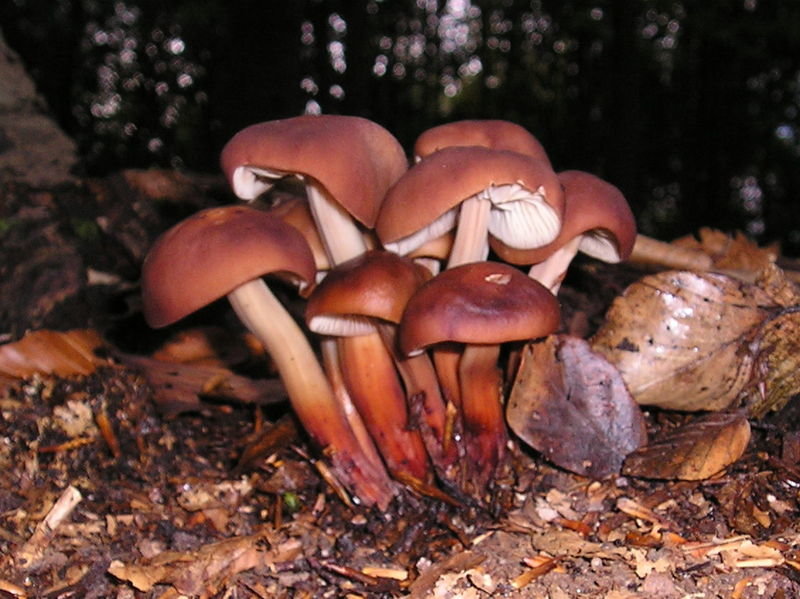Collybia spindle-footed (Gymnopus fusipes)
- Division: Basidiomycota (Basidiomycetes)
- Subdivision: Agaricomycotina (Agaricomycetes)
- Class: Agaricomycetes (Agaricomycetes)
- Subclass: Agaricomycetidae (Agaricomycetes)
- Order: Agaricales (Agaric or Lamellar)
- Family: Omphalotaceae (Omphalotaceae)
- Genus: Gymnopus (Gimnopus)
- Type: Gymnopus fusipes (Spindle-footed hummingbird)
Synonyms:

Collibia fusipod grows on stumps, trunks and roots of old deciduous trees, often on oaks, beeches, chestnuts. Widespread in deciduous forests. Season: summer – autumn. Fruits in large clusters.
head 4 – 8 cm in ∅, at an early age, then more, with a blunt tubercle, often irregular in shape. Color red-brown, later lighter.
Pulp , , with light fibers, rigid. The taste is mild, the smell is slightly distinguishable.
Leg 4 – 8 × 0,5 – 1,5 cm, the same color as the hat, darker at the base. The shape is fusiform, thinned at the base, with a root-like outgrowth that penetrates deeply into the substrate; first solid, then hollow. The surface is furrowed, wrinkled, often longitudinally twisted.
Records weakly grown or free, sparse, of various lengths. The color is whitish to cream, with rusty-brown spots. The rest of the cover is missing. Spore powder is white. Spores 5 × 3,5 µm, broadly oval.
Similar species: Honey agaric winter – conditionally edible mushroom
Collybia fusipod is usually considered a mushroom inedible. However, some authors argue that the youngest fruiting bodies can be consumed, they have an exquisite taste. Old ones can cause mild poisoning.









